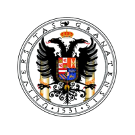G. González-Cordero, M.B. González, F. Campabadal, F. Jiménez-Molinos, J.B. Roldán, “A new technique to analyze RTN signals in resistive memories” In 21th Workshop on Dielectrics in Microelectronics (INFOS), 2019 in Cambridge University, Cambridge, UK.
Abstract
A new technique to study random telegraph noise is proposed. It is based on an analysis of the increments of the sampled current instead of the current itself. These current increments are represented following a time-lag-plot schema. The meaning of the graphical patterns obtained is unraveled. Specifically, this new method is very effective for detecting current spikes; in addition, it can be used to easily detect an unsuitable sample rate and achieve optimum RTN measurement conditions. This technique has been used for analyzing two current versus time records for state-of-the-art Resistive Random Access Memories (RRAMs), the analyzed results linked to the corresponding random telegraph noise signals are shown in order to illustrate the validity and effectiveness of the proposed method.
References
[5] F. M. Puglisi, N. Zagni, L. Larcher, P. Pavan. IEEE Trans. 65 (2018) 2964-2972.
[9] C. Márquez, N. Rodríguez, F. Gámiz, R. Ruiz, A. Ohata. Solid-State Electron. 60 (2016) 117.
[11] F.M. Puglisi, L. Larcher, A. Padovani and P. Pavan, IEEE Trans. Electr. Dev. 62 (2015) 2606-2613.
[12] M. Lanza et al., Adv. Electron. Mater. 5 (2019) 1800143.
